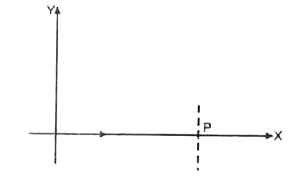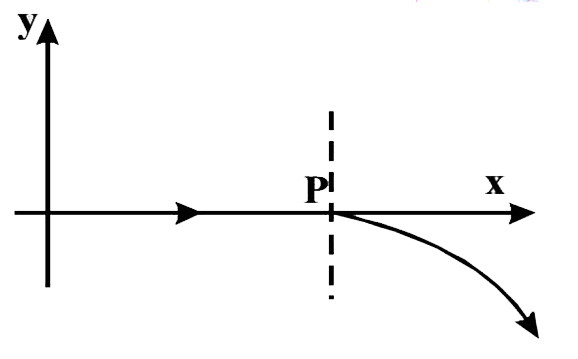For a particle charged positively moving in a x-y plane initially along the x-axis , there is a sudden change in path due to the presence of x-y plane and is found to be non-circular .Which of the following combination is possible ?

→E=0,→B=bˆi+cˆk
→E=aˆi,→B=cˆk+aˆi
→E=0,→B=cˆj+bˆk
→E=aˆi,→B=cˆk+bˆj
The correct Answer is:B
Topper's Solved these Questions
- 15 MAGNETIC EFFECTS OF CURRENTSBOOK - MODERN PUBLICATIONCHAPTER - 15 MAGNETIC EFFECTS OF CURRENTSEXERCISE - Multiple choice questions (Level - III)
14 Videos
- 15 MAGNETIC EFFECTS OF CURRENTSBOOK - MODERN PUBLICATIONCHAPTER - 15 MAGNETIC EFFECTS OF CURRENTSEXERCISE - Recent Competitive Questions
31 Videos
- 15 MAGNETIC EFFECTS OF CURRENTSBOOK - MODERN PUBLICATIONCHAPTER - 15 MAGNETIC EFFECTS OF CURRENTSEXERCISE - Multiple choice questions (Level - II)
22 Videos
- ATOMS, MOLECULES AND NUCLEIBOOK - MODERN PUBLICATIONCHAPTER - ATOMS, MOLECULES AND NUCLEIEXERCISE - Recent Competitive Questions
40 Videos
Similar Questions
For a positively charged particle moving in a x−y plane initially along the x-axis , there is a sudden change in its path due to the presence of electric and//or magnetic fields beyond p . The curved path is shown in the x−yplane and is found to be non - circular. Which one of the following combinations is possible ?

View SolutionFor a positively charged particle moving in a x−y plane initially along the x−aξs , there is a sudden change in its path due to the presence of electric and//or magnetic fields beyond p . The curved path is shown in the x−yplane and is found to be non - circular. Which one of the following combinations is possible ?

View Solution
Knowledge Check
For a positively charged particle moving in a x−y plane initially along the x−aξs , there is a sudden change in its path due to the presence of electric and//or magnetic fields beyond p . The curved path is shown in the x−yplane and is found to be non - circular. Which one of the following combinations is possible ?
 A→E=0,→B=bˆi+cˆkB→E=aˆi,→B=cˆk+aˆiC→E=0,→B=cˆj+bˆkD→E=aˆi,→B=bcˆk+bˆj
A→E=0,→B=bˆi+cˆkB→E=aˆi,→B=cˆk+aˆiC→E=0,→B=cˆj+bˆkD→E=aˆi,→B=bcˆk+bˆjA particle projected from origin moves in x-y plane with a velocity →v=3ˆi+6xˆj, where ˆi and ˆj are the unit vectors along x and y axis. Find the equation of path followed by the particle :-
Ay=x2By=1x2Cy=2x2Dy=1xA point mass is moving in the x-y plane. Its acceleration is a constant vector perpendicular to the x-axis. Which of the following do/does not charge with time ?
Aonly y-component of its velocity vectorBonly x-component of its velocity vectorConly y-component of its acceleration vectorDonly x-component of its acceleration vector
A particle is moving in X-Y plane that x=2t and y=5sin(2t). Then maximum speed of particle is:
View SolutionA particle projected from origin moves in x-y plane with a velocity →v=3ˆi+6xˆj, where ˆi and ˆj are the unit vectors along x and y axis. Find the equation of path followed by the particle :-
View SolutionA point mass is moving in the x-y plane. Its acceleration is a constant vector perpendicular to the x-axis. Which of the following do/does not charge with time ?
View SolutionA particle moves in x-y plane according to rule x=asinωt and y=−acosωt. The particle follows
View SolutionAn electron is moving with constant velocity along x-axis. If a uniform electric field is applied along y-axis, then its path in the x-y plane will be
View Solution
